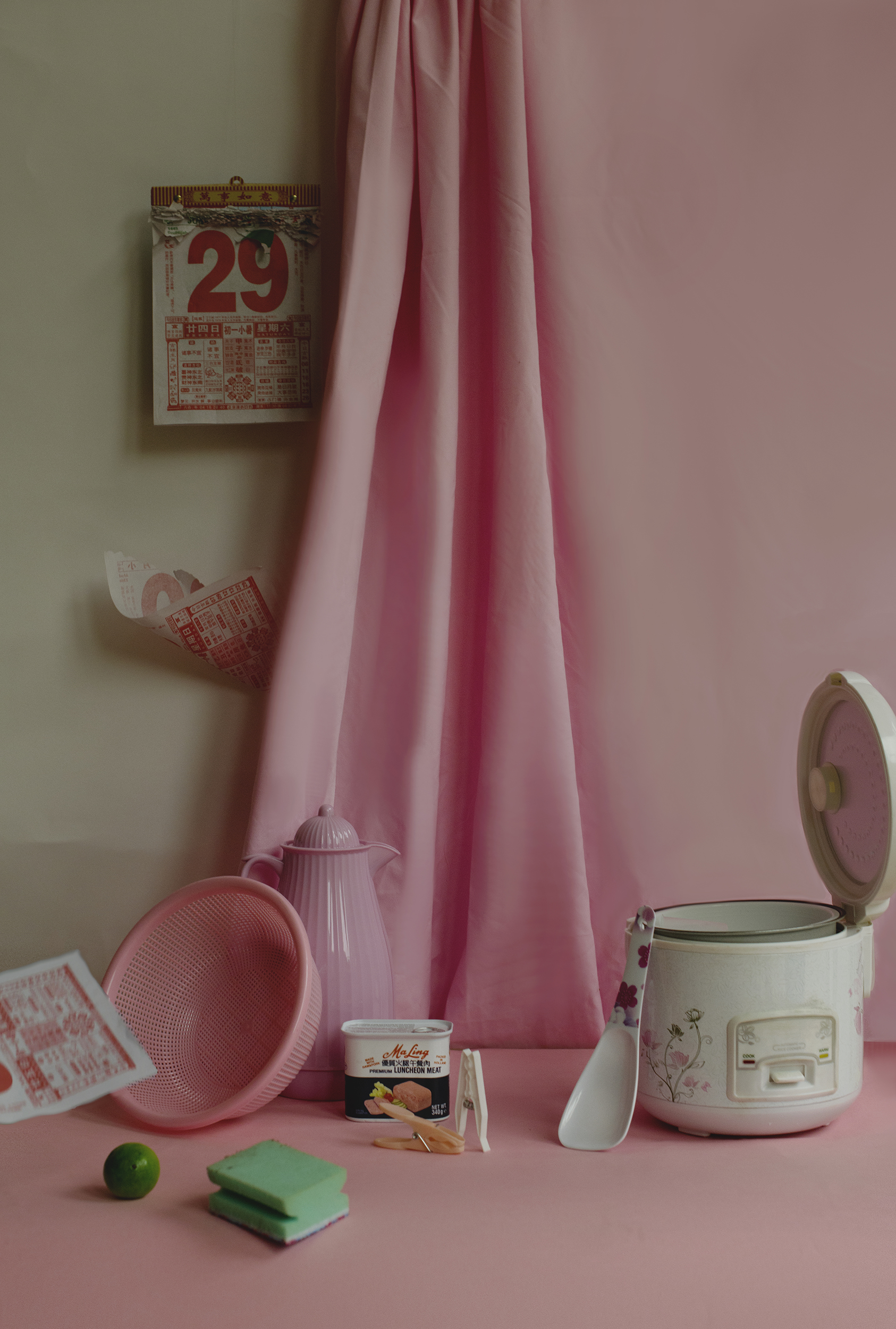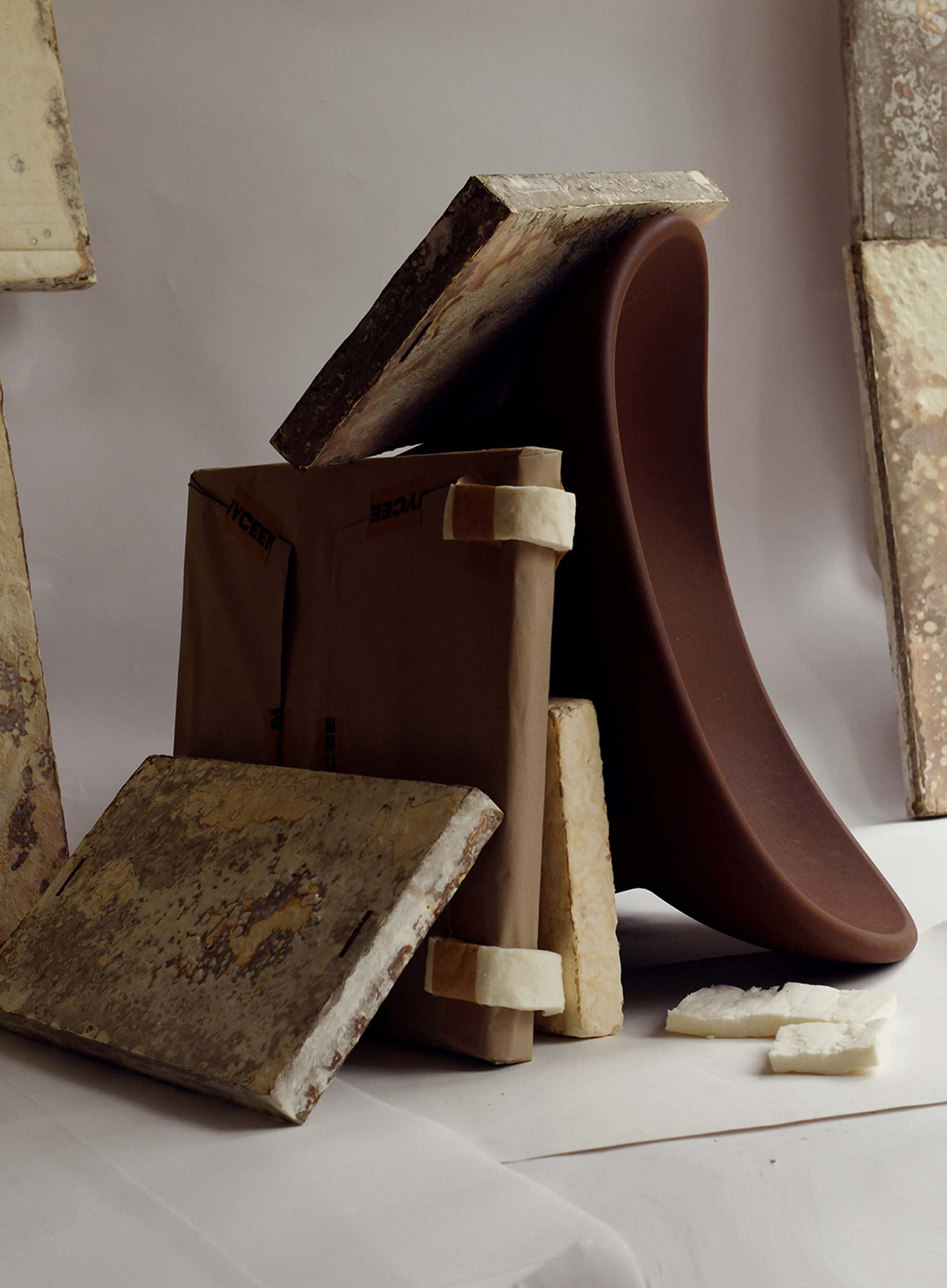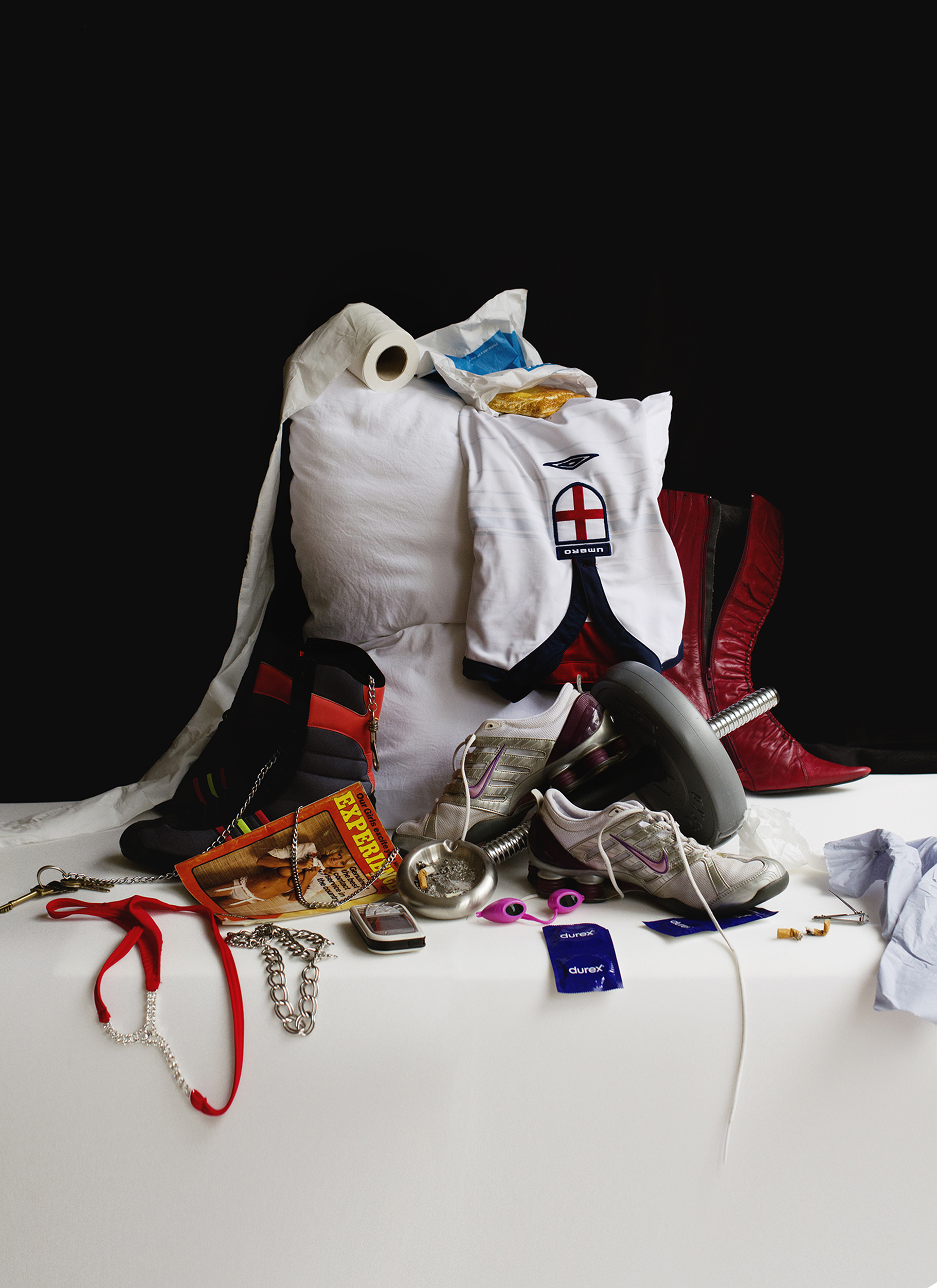All images © Kenneth Lam
Through his staged photography, Kenneth Lam brings to life the stories embedded in the evolving Museum of the Home
The Museum of the Home was formerly known as the Geffrye Museum, after Sir Robert Geffrye – an English merchant whose wealth was in part accrued from investments in the transatlantic slave trade and who donated the money to build the almshouses which house the gallery in 1714. In 2018 the museum closed to the public for renovation, reopening in 2021 with a new name and mission to reconsider its collections to address its colonial past and better represent its local community. This reopening included seven new Rooms Through Time, co-curated with members of the communities they represent, which intended to more honestly reflect how the complex histories of migration and identity have shaped life in Britain.
In Still Living, photographer Kenneth Lam brings life to objects from the museum’s new rooms, which span 1878 to 2049, and examines the personal and political life of the home and domestic space in Britain over the past 147 years, exploring how it will transmute into the future. In his photographs, Lam – who uses still lifes in his practice to address ideas around heritage, identity, family and culture – dramatises these new exhibits, creating intimate portraits of their inhabitants.
The Museum of the Home first approached Lam after seeing his project A seat at our table for Space Gallery, in which he explored the diverse cultures of Redbridge, in East London, via the common language of the dinner table. Lam explains that“they saw that commission at the same time as they were opening these new rooms and found a connection between the way I was using still lifes to discuss heritage and culture and how they work with objects in their collection”.


“By positioning objects in a certain way you can create tension or give things a sense of falling or floating”
Despite similarities between Lam’s previous projects and Still Living, working with historic objects presented him with a unique challenge, he reveals: “I’ve been playing with the arrangement and composition of objects for so long that the technicalities of making a still life feel quite natural and simple to me. I think the more challenging aspect of the commission was the emotional side because these weren’t my stories, these aren’t rooms I’ve lived in or spent time in.”
Lam first came to the still life after five years working as a fashion photographer. While living in Hong Kong during the pandemic he began making still lifes of his grandmother’s home and quickly found an affinity with the form: “There’s something very romantic about them. I love how you’re so in control. By positioning objects in a certain way you can create tension or give things a sense of falling or floating. Somehow, even though my images are always staged, it felt more honest than doing fashion photography.” The tension and dynamism that Lam describes is a unique quality of his work; despite the potential rigidity of his chosen form his photographs feel lived-in and vital.
Lam’s work photographing his grandmother’s home culminated in his project Always Returning to You where he photographed scenes from her home in the immediate aftermath of her death. The images, which depict everyday moments of their lives together thrown into disarray, capture the surreal and consuming experience of grief in a way which is visceral and charged with emotion.


In his work for the Museum of the Home Lam infuses in his images the same emotional truth and honesty as his personal work but relies on his imagination and the museum’s descriptions of each room to construct a portrait of their inhabitants. “I tried to approach this with the same kind of structure as my personal work but the emotion I put in was entirely made up in my own head,” he tells me. “Looking at the rooms I got information about the objects from the museum but also thought about who might live there, what their story is, what type of person they are. When I met up with the curators who talked me through the stories around the objects and rooms I think they thought the questions I asked were a bit weird; ‘Are these people in a rush?’ ‘What is their relationship like?’ ‘Do they love each other?’ ‘Are they late?’ A lot of who they were was left to my own interpretation”.
This careful consideration of his subjects is easily identifiable in Lam’s images. In ‘A Terraced House in 2024’ Lam revels in the quotidian beauty of the rituals of cooking and cleaning in the Nguyễn family kitchen, “showing the intimacy of our relationships with these very everyday objects felt special.” Torn pages of a calendar hang mid-air and fall onto the countertop beside a colour-coordinated light pink teapot, curtain and strainer, a lime and pink scouring pad and a rice cooker embellished with ornate flowers.
Similarly Lam quickly found an emotional connection to ‘A High-Rise Flat in 2005’, “I related most to the 2000s flat because that’s my generation and it just had so much stuff in it. I immediately saw the Greggs sausage roll in bed and thought, ‘okay, she is depressed, why is there all this stuff on the floor? Does it belong to her ex or something?” Lam’s depiction of the chaotic lives and rocky relationship of a queer couple in the early 2000s also reveals his subtle attention to representing the historic time of each room in his approach to photographing them. The crowded, bright, evenly lit and almost glossy appearance of 2005 contrasts with the chiaroscuro of ‘A Townhouse in 1878’ which is reminiscent of the Dutch still lifes Lam cites as an early influence on his own use of the form.

Of all the Rooms Through Time there is one in which Lam’s skill in crafting narratives in his images is most evident. In ‘A Terraced House in 1978’ Lam draws our attention to the challenges of raising children amid the racism of the 1970s for black families. Against a red backdrop rests a red tray with a black doll propped up inside, next to it are some dominoes, an afro comb with a handle made to resemble a raised fist and three toy cars. Placed above this arrangement, there is a newspaper with the headline ‘BLACK POWER or bloodbath’ and a small toy police car.
The room had an immediate effect on Lam: “seeing the television and newspaper headline and then children’s toys on the floor conjured a very strong image for me of being a kid playing with your toys while your parents watch the news on TV, and being affected by it despite not really being able to understand what’s happening. I wanted to show the relationship between this strong imagery; this aggressive red, which represents blood but also power, rage and all these complex adult emotions and this newspaper headline, with children’s toys; a pack of cigarettes, a doll, a police car, an ambulance”.
It is perhaps in this image that Still Living most reflects the potency of historic objects in understanding the present day. In his careful representations of the complex relationship between identity and the home Lam reveals too the palpable resonance of the past in the present. As the Museum of the Home continues its project to decolonise its collections, and decides what to do with the statue of Robert Geffrye that remains on the museum’s grounds, Lam’s work raises valuable questions about the afterlives of objects and the stories they tell.

